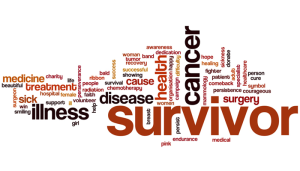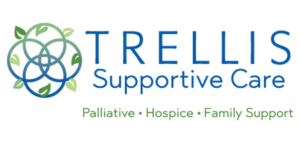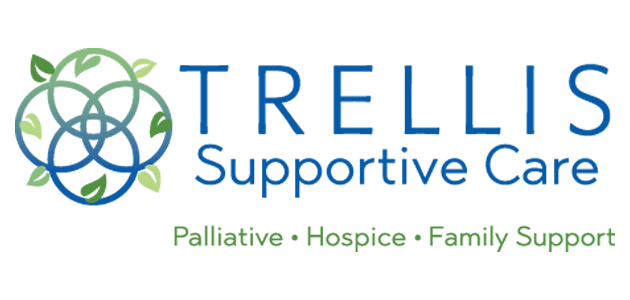Because We Care
Practical tips for family caregivers
April/May 2016
A primary goal for family caregivers is to promote your loved one’s dignity, independence, and sense of control over their own life. This month we offer three articles to that end.
Addressing loneliness
 Loneliness is more than an unpleasant emotion. Older adults who are lonely are also more likely to be depressed and more likely to die at a younger age than their peers. They are also more likely to need help sooner with walking, dressing, and bathing.
Loneliness is more than an unpleasant emotion. Older adults who are lonely are also more likely to be depressed and more likely to die at a younger age than their peers. They are also more likely to need help sooner with walking, dressing, and bathing.
Loneliness comes about when there is a mismatch between the kinds of relationship(s) we have and the one(s) we want. It’s more a matter of quality of relationships rather than quantity.
To find out if your loved one is at risk for loneliness, ask if he or she feels
- lacking in close friendship. Is there a “best friend” or special buddy in his or her life?
- odd one out in a group. Does he or she have friends or participate in group activities but feel “different” from everyone else?
- socially isolated. Would your relative like to spend more time doing things with others?
If you are concerned, here are several strategies that can help.
- Increase activities. Look for interesting classes and events in the community. Perhaps go with your relative at least once, or help out with transportation.
- Facilitate use of the Web. Help your loved one track down old friends on Facebook. Or make new ones via email discussion groups about a hobby or interest.
- Connect by phone. Take turns with other family members so your loved one receives a phone call check-in every day. Or look for a local program that offers regular “phone buddy” check-in calls. These have been shown to be surprisingly effective.
- Schedule fun time together. With all the help that’s needed, friendly family visits can become “transactions.” A periodic “date” for something as simple as coffee or a video can do wonders for the spirit.
- Find a counselor. If there is no one your relative feels comfortable sharing confidences with, consider a private counselor. Medicare may cover the cost.
After cancer treatment
 Even if the doctor says your loved one has no more cancer, the joy of such news may be tempered by worries about the cancer coming back. Although the potential for a return of cancer is real, you can draw on skills learned during the diagnosis phase. When living with uncertainty, stay focused on what you can control and accept that some things are as yet unknowable.
Even if the doctor says your loved one has no more cancer, the joy of such news may be tempered by worries about the cancer coming back. Although the potential for a return of cancer is real, you can draw on skills learned during the diagnosis phase. When living with uncertainty, stay focused on what you can control and accept that some things are as yet unknowable.
You may also experience other strong feelings flooding in now, such as sadness, anger, and fear. It’s common for people to push emotions down just to get through the treatments. And then the feelings resurface once the immediate threat is over.
It helps to concentrate on a return to “normal.” Or at least a new normal. While making this shift, let your loved one take back as many of his or her usual responsibilities as possible. Each week, ask yourself what more he or she could start doing again. If physical changes pose limitations, ask the doctor for a referral to physical or occupational therapy for help.
Your relative may still need you to monitor his or her treatment side effects. Family and friends may become less available. And you will also have less contact with your loved one’s cancer team. It’s wise, therefore, to cultivate support from other sources, such as a caregiver support group.
This is also a good time to assemble all the medical records while treatment is fresh in your mind:
- The official diagnosis and all biopsy reports.
- A list of all treatments, including dates, dosages, and the name of any medications.
- Reports from any surgeries or hospitalizations.
- Documents that describe any problems that came up during treatment.
These records will be helpful if questions arise in the future. This task is also a nice way to “close out” the treatment chapter and turn your focus to the benefits of survivorship.
Return to topWhen should you make an advance directive?
 Everyone over age 18 should have an advance health care directive. This document names a person to make decisions for you in case you are not able to do so yourself. It also gives instructions for care preferences at the end of life.
Everyone over age 18 should have an advance health care directive. This document names a person to make decisions for you in case you are not able to do so yourself. It also gives instructions for care preferences at the end of life.
That’s not morbid. It’s simply good medical communication. Recall the heartbreaking cases of young people in tragic accidents who lacked advance directives (Karen Ann Quinlan, Nancy Cruzan, and Terri Schiavo, to name a few). They were unable to speak for themselves, so their care was determined through battles in court.
It’s never too early to have an advance directive. Nevertheless, many adults put off the task of creating one. April 16 is National Healthcare Decisions Day. It is a good time to prompt your loved one to complete this document. (And don’t forget to complete one for yourself, too!)
Patients often expect that the doctor will bring up the subject of an advance directive “when it’s likely to be needed.” Waiting until there is a turn for the worse, however, may be too late. The patient could go into a coma or be so advanced with dementia that they can’t communicate their preferences.
Although everyone needs an advance care directive, there are red flags that you need to get one in place right away:
- A hospitalization
- A scheduled surgery
- Diagnosis of a life-threatening illness
- Diagnosis of dementia
If it’s too awkward for you to start the discussion with your loved one, ask the doctor to do so while you are in the room. (Physicians now have the ability to bill Medicare for a conversation about advance care planning.) You can then continue the conversation at home by downloading the form for your state and getting your relative’s wishes on paper. While you are at it, make one for yourself! Happy Healthcare Decisions Day.
Return to top
